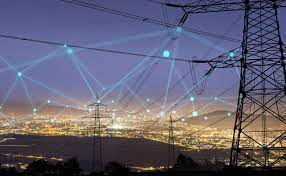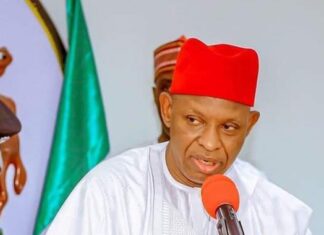By Jeph Ajobaju, Chief Copy Editor
Buoyant Lagos is ignoring the latest contract the federal government has signed to raise power generation by 360 megawatts (mw) by pressing on with its own proposal for a power market to guarantee supply to its more than 20 million residents.
The plan is a first in Nigeria, where energy generation, transmission, and distribution are overseen by the federal government whose seat of power is Abuja.
Bloomberg reports that Lagos hosts headquarters of most large international and domestic businesses in Africa’s biggest economy, contributes about 25 per cent of Gross Domestic Product (GDP), and over half of industrial and commercial output.
Lagos itself is the fifth largest economy in Africa.
It made N127 billion in internally generated revenue (IGR) in the first quarter of 2021 (Q1 2021), which splits as N42.333 billion for each of the three months. But that is less than the N60.318 billion per month envisaged in the 2021 fiscal year.
Unstable power supply is largely responsible for the revenue short fall, according to Energy and Mineral Resources Commissioner, Olalere Odusote.
Abuja, aware of the social and economic impact of unstable electricity nationwide, has signed the Engineering, Procurement, and Construction (EPC) contract for the Gurara II dam project as part of plans to raise power generation by about 360mw.
However, Lagos plans its own power generation, transmission, and distribution to “be owned and operated substantially by the private sector” and supervised by a regulator, Odusote said in a consultation paper, reported by Bloomberg.
Companies using gas and renewable energy will feed the Lagos grid, which will be connected to its national counterpart and complemented by off-grid alternatives such as standalone solar solutions.
Gas-fired plants already account for about 80 per cent of Nigeria’s electricity capacity.
Unstable power supply
Inadequate energy supply in Lagos is the “single biggest infrastructure and developmental challenge,” Odusote stressed.
With a fast-expanding population of about 27 million people, he added, Lagos State currently gets an average of about 1,000mw for no more than 12 hours a day. Lagos requires nine times as much power around the clock, according to him.
Nigeria privatised generation and distribution infrastructure about a decade ago, but held on to its transmission network.
Poor maintenance and insufficient investment have resulted in only about 4,500mw of 13,000mw installed capacity dispatched off grid daily – a fraction of national requirement.
Frequent power outages in Lagos means available supply is “essentially unusable for most manufacturing and industrial processes” so that companies must produce their own electricity, Odusote said.
Commercial and residential customers are left relying on expensive generators during blackouts, while most households are not registered as connected to the grid at all, he added.
Lagos intends to publish an electricity policy before July and submit a draft law for power development to the State Assembly in the third quarter, Odusote stated in the consultation paper.
Upgrading to 5,000mw
National power generation is currently between 4,500mw and 5,000mw. An additional 360mw will at best stabilise 5,000mw for a population of about 200 million. That is if power supply ever becomes stable.
PUNCH reports that documents it sighted at the Ministry of Water Resources in Abuja show that the signing of the EPC contract was one of the major achievements of the ministry in recent times.
The ministry had put the Gurara I 30mw hydropower plant on concession to increase power generation as well as water supply and irrigation.
In the document, the ministry listed its achievements to include
· “Signing EPC contract of Gurara II Dam project with 360MW hydropower.”
· “Initiation of Itsi Multipurpose Dam (water supply, irrigation and hydropower) project in Kaduna State.”
· “Initiation of Hawal Inter-basin Water Transfer Project.”
In the document, which was prepared by the Department of Dams and Reservoir Operations, the ministry said the hydropower potential of Nigeria’s dams is 12,220mw.
But only 1,930mw have been developed through Kainji, Jebba, and Shiroro hydropower plants, it explained.
Health hazards of open defecation
PUNCH adds that another document it obtained from the ministry on ending open defecation shows that Nigeria loses N455 billion yearly because of poor access to sanitation facilities.
“Nigeria losses about 1.3 per cent (N455 billion) of her GDP annually to poor access to sanitation.
“On health impact, 102,000 under-five child deaths occur each year due to diarrhea; about 90 per cent is directly attributed to unsafe water and sanitation,” the document said, per PUNCH.
According to the ministry, this causes one in four children under five years of age to exhibit severe stunting, and two in 10 die of diarrhea and other WASH related illnesses.
The ministry disclosed that community-led total sanitation has been scaled up to end open defecation.
It is also trying to scale up water, sanitation, and hygiene information through a national roadmap to end open defecation by 2025, among other plans.













